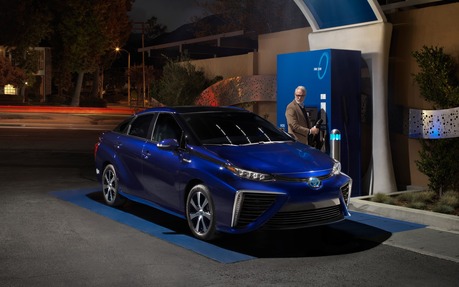Toyota Surpasses 3,000 Mirai Hydrogen Fuel Cell Vehicle Sales
Move over polluters, the Toyota Mirai, one of the world’s first mass-produced hydrogen fuel cell electric vehicles, has surpassed 3,000 sales in California. Having reached this new milestone, Mirai make up more than 80% of all hydrogen fuel cell vehicles in the United States.
The Toyota Mirai, a four-door, mid-size sedan, is a zero-emission hydrogen vehicle with an EPA estimated driving range rating of 502 kilometres and 28 km/L city/highway/combined. Its performance fully competes with traditional internal combustion engines – but uses no gasoline. With a refueling time of approximately five minutes, the Mirai creates electricity using hydrogen, oxygen and a fuel cell, and emits nothing but water vapor in the process.
- Also: Canada’s First Public Hydrogen Fuelling Station Opens in Vancouver
- Also: Hello, Beautiful: Second-gen 2021 Toyota Mirai Concept is Unveiled

Toyota continues its work to build a hydrogen society and remains committed to supporting the development of a hydrogen refueling network. Thirty-one retail hydrogen stations are now open for business in California, with an additional twelve stations projected to open in California in 2018. Toyota continues to partner with FirstElement Fuels and Shell to support the creation of a broad network of hydrogen infrastructure in California. Toyota is also collaborating with Air Liquide, a producer of industrial gases, to set up a network of 12 hydrogen fueling stations stretching from New York to Boston, with the first station expected to launch in Boston later this year.
In addition, Toyota is building a new Tri-Gen facility at the Port of Long Beach that will use bio-waste sourced from California’s agricultural industry to generate water, electricity and hydrogen. The hydrogen will fuel all Toyota fuel cell vehicles moving through the Port, including new deliveries of the Mirai sedan and Toyota’s Heavy Duty hydrogen fuel cell class 8 truck, known as Project Portal. Looking ahead, Toyota has also established a range of partnerships with both private and public entities as well as academic institutions to further accelerate its vision of a hydrogen based future.
